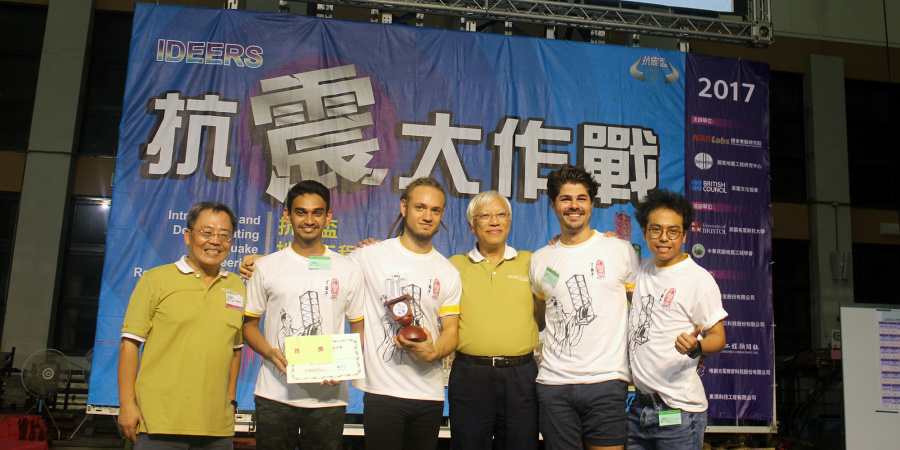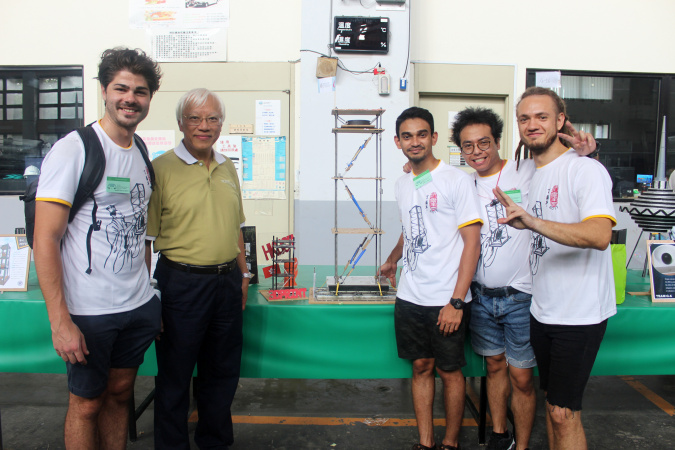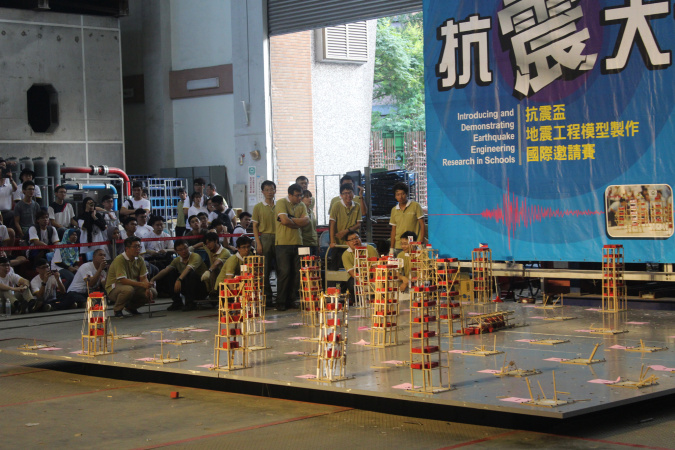Civil Engineering Postgraduate Students Crowned Champion at Earthquake Engineering Competition
A Civil and Environmental Engineering postgraduate team won three awards including the championship in the Introducing and Demonstrating Earthquake Engineering Research in Schools (IDEERS) competition held in Taiwan on September 22-23.
Led by Prof J S Kuang, the team comprises PhD students Srinivas Mogili (team leader), Michele De Filippo, Bence Kató and MPhil student Hoi Yin Yung. They won First Prize in the Postgraduate Division, Innovation Award of Seismic Isolation and Energy Dissipation, and Best Presentation Award.
The students come from different regions and research backgrounds, including India, Italy, Hungary and Hong Kong with structural, geotechnical and wind engineering specialties. Such diversity enabled them to create an innovative design for their model building from varied point of views.
Teams in the postgraduate division were required to design and build an earthquake-resistant model building by applying advanced technologies. The model building also has to meet the requirements on space availability, feasibility and cost-effectiveness.
Jointly organized by the National Center for Research on Earthquake Engineering, National Applied Research Laboratories and British Council, the IDEERS contest attracted more than 100 teams and over 500 participants to compete in three divisions (high school, undergraduate and postgraduate) this year.
Established since 2001, this renowned international earthquake engineering competition has drawn teams from all over the world every year including the US, UK, many parts of Asia and, in particular, seismically-active regions of the world including New Zealand, Guatemala, Japan, Indonesia, and Taiwan itself, to name a few.



